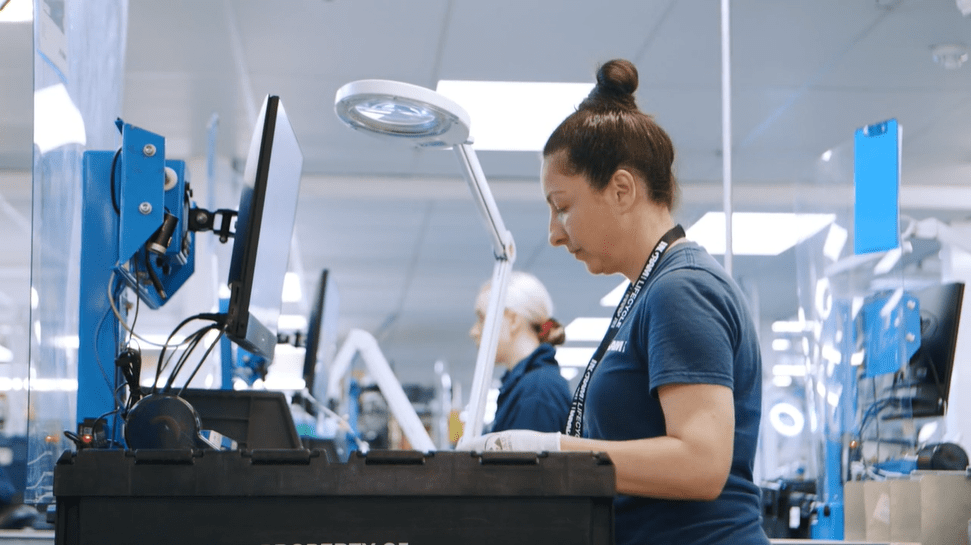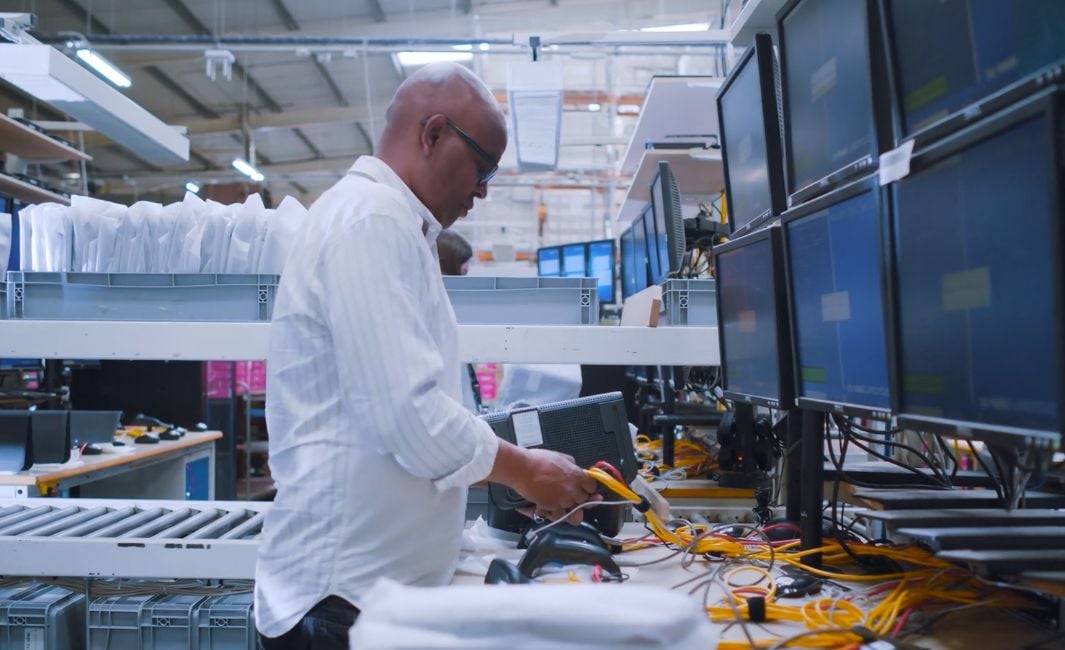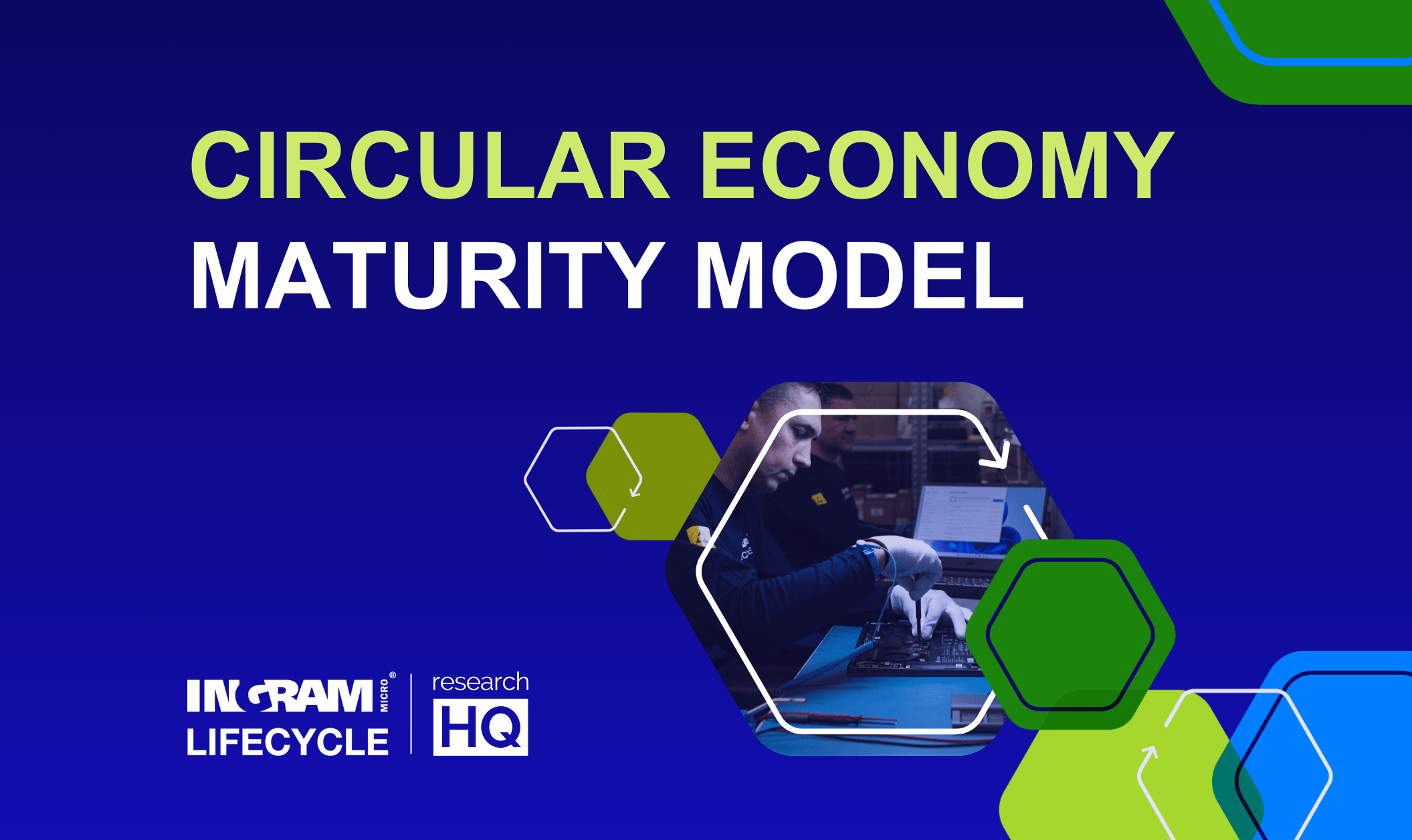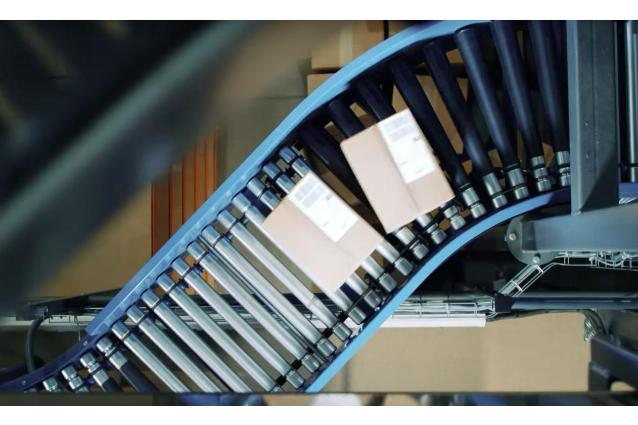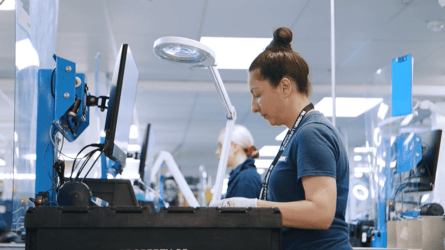Are you overwhelmed by returns of electronic products or just looking to cut costs on your reverse supply chain? Your returns policy may be the first port of call to check and see where you can tighten terms. Becoming stricter, however, may not be the best way forward and can cost you sales.
Ingram Micro Lifecycle has supported customers with reverse logistics services for over 30 years. Our global footprint contains a diverse portfolio of customers including retailers and OEMs (Original Equipment Manufacturers). We’ve had years of insight into customer pain points behind returns management.
In our latest article below, we provide a top-level overview of returns policies and discuss different ways in which these influence purchase decisions and behavior of your customers.
What is a return policy?
This legal document outlines the rights of a consumer should they wish to take a product they’ve purchased back to the seller. The policy details their entitlements to cash, exchanges, or store credit. It also defines time periods, means of signaling return intentions, and the necessary process the consumer and seller must follow.
This policy reduces the perceived purchase risk that a consumer may experience because it demonstrates a positive resolution, should they be dissatisfied with their purchase. For example, they may receive a complete refund, which means they’ve lost nothing if they no longer want the product.
Why do people return products?
Generally, the reasons behind product returns fall into three categories:
- Mismatch against their needs. This includes a mistaken order or incorrect product information given.
- Issues with ordering or delivery. This includes late delivery or the incorrect product received.
- Abuse of the returns policy or fraud. This includes bracketing and credit card fraud.
A returns policy should cover each of these instances and advise how a consumer’s return intention will be handled.
The changing economic situation has led to increased pressure on purchase decisions. A quarter of consumers are returning a higher percentage of their online purchases. This has been attributed to inflation and other economic pressures.
The return rates of purchases are higher for online purchases when compared to brick-and-mortar sales. Online sales see around 25% of returns, which is higher than 8% for physical purchases. This may be understandable when you consider the ability to see, hold, and experience a tangible product in your hands, compared to photos and a text description online.
It can be much easier to match a customer’s needs in person rather than online as it opens up the opportunity for dialogue around the product.
How the returns process and policies affect customer behavior
Below, discover seven ways in which your returns policy or the process you follow can affect whether a potential customer decides to buy from you, or remains loyal to your brand.
1. Underpromise and over-deliver
Outline shipping and delivery timeframes so that these are still attractive for the customer whilst still easily achievable for you. These provide an opportunity for you to set and beat customer expectations.
This is a much better outcome than if you fail to deliver on the timescales you’ve established. It’s better to pleasantly surprise your customers than underwhelm or disappoint them.
A disappointed customer is less likely to remain loyal to your brand so they won’t purchase from you again and will discourage others in peer referrals. Conversely, if the customer is impressed by your over-delivery, then the likelihood of retaining their custom is increased.
2. Long vs short returns period
A longer returns window often leads to an increase in sales. People feel more relaxed about their purchase knowing that they have a longer period to decide whether to keep the product. This sense of security encourages their purchase decision and reduces some of the perceived risk.
This increase in sales boosted by a more lenient returns window can compensate for the costs associated with returns. Ownership bias as a result of the lenient policy can also play a part. As customers have had a longer time to get used to the product, they may decide to keep it.
If faced with a shorter returns window, they’d be more inclined to make a quicker decision based on initial first impressions.
Whatever the length of returns window you allow, make sure you, or your returns partner, can rapidly process these to tackle depreciation and recover value where possible. If you can’t manage the volume you’re receiving, this will negatively impact the outcome for the customer and result in a dissatisfactory experience.
3. Fee or free returns
Having a free returns policy makes the process low-risk for customers as they have nothing to lose when they make a purchase and make up their minds. However, this can encourage customers to take advantage of the policy and become intentional returners.
For example, those who ‘bracket’, purchase multiples of the same item knowing they will be making returns. You have to handle returns that aren’t caused by a fault or issue with the product and take a hit on costs.
By charging customers a fee to instigate a return, they must seriously consider whether they want to issue the return. Although it means that customers ultimately have to pay for bracketing, as an example, it will however affect their purchase decision as they may not want to be out of pocket, even if it is for a small amount.
Fees for returns are being introduced to combat the environmental impacts of return volumes, particularly if a home collection is offered.
47% of consumers in the UK refuse to shop with a retailer that charges for returns. In the US, this is a higher proportion, at 54%.
4. Avoidance, prevention, and gatekeeping
These are three outcomes of the returns signal from your customer that isn’t a returns acceptance.
You can avoid the return by perhaps offering a partial refund if the customer keeps the product; you can offer additional customer support to get the cause of the fault so the customer is empowered to fix it themselves; or you can find some way in which the customer hasn’t met the terms of your returns policy and reject the returned item.
Avoidance tactics may result in the customer retaining a product that they’re not happy with, and gatekeeping can see the return issued back to them which may add to their costs and dissatisfaction.
Prevention works with them to understand the problem, enabling you to feed information you gather back to product development or further along the supply chain to better prepare instructions, for example, so the product is more successful in the future.
You should want a customer to be happy with the product, its performance, and with their shopping experience. If they aren’t, then they’re not likely to shop with you again.
5. In-person returns or mail returns
This isn’t a one-size-fits-all solution. You’ll have some customers that find one easier than the other, and some customers where vice versa works better. It all depends on their circumstances.
Mail returns mean that the customer needs access to a printer so they can print off the shipping label. This can be the same whether the return is being collected from their home or taken to a mail center.
In-store drop-offs mean that the customer must travel to your local branch to take the product back.
Customer procrastination will impact you when they have to return the item either in the mail or in-store as there’s a less rigid timeline for them to adhere to. As the return is in their control, it can take more time for them to prepare the product and get it back to you. This impacts depreciation and the potential resale possibility if the product has a degree of seasonality.
These various avenues all entail different inconveniences for the customer. The higher the inconvenience, the less likely the customer will shop with you. 96% of consumers would travel for a free return and 72% said they’re more likely to buy if they could make an in-person return.
6. Environmental impact
There are environmental implications associated with returns, particularly if you’re organizing a specific collection of a product or the customer is making a dedicated journey to return the product to you.
Consumers are mindful of their environmental impacts and you should also be looking for ways to be greener about your activities. Your sustainability efforts in retailing products may be wasted if your returns policy undoes your hard work.
Internet searches for sustainable goods increased by 71% across 5 years. Consumers seek environmentally-friendly methods for returns which will influence their shopping behavior when added to all the other factors behind their decisions.
7. Straightforward process
Your returns policy should outline a process that’s easy to follow, convenient as much as possible, box- and printer-free, understandable, and effortless, without triggering a new customer services case or request for additional support.
Seek automation where possible to improve efficiencies and provide frequent (but only necessary) updates on the progress of the return.
The customer journey and their satisfaction are key. It should be as simple as possible so there’s minimal effort required. A straightforward process, getting them the result they want, encourages repeat custom.
Ready to solve your returns problems?
As we said above, there’s no one-size-fits-all solution. You need to understand your customers, their intentions, and the biggest factors that influence their unique shopping habits. Weigh these against your costs and capabilities to see where there’s room for improvement.
If it all seems like too much for you to handle, there are returns management partners, like Ingram Micro Lifecycle, that can step in to alleviate the pressure. We operate white-label returns centers to rapidly process products and ensure they’re accurately tested and graded, minimizing depreciation and recovering value where possible.
Get in touch to discuss your returns management situation, and how our solutions can support these.
Additional reading:
- 11 reasons why consumers are returning Small Domestic Appliances
- 14 reasons your consumers are returning their mobile phones
- Introduction to returns avoidance: tactics for a greener supply chain
- Tips for getting the most from your returns management partner
- 5 factors that affect product depreciation
- 7 reasons why consumers are switching from new to refurbished devices
- What is e-waste and the environmental toll of our tech habits?



